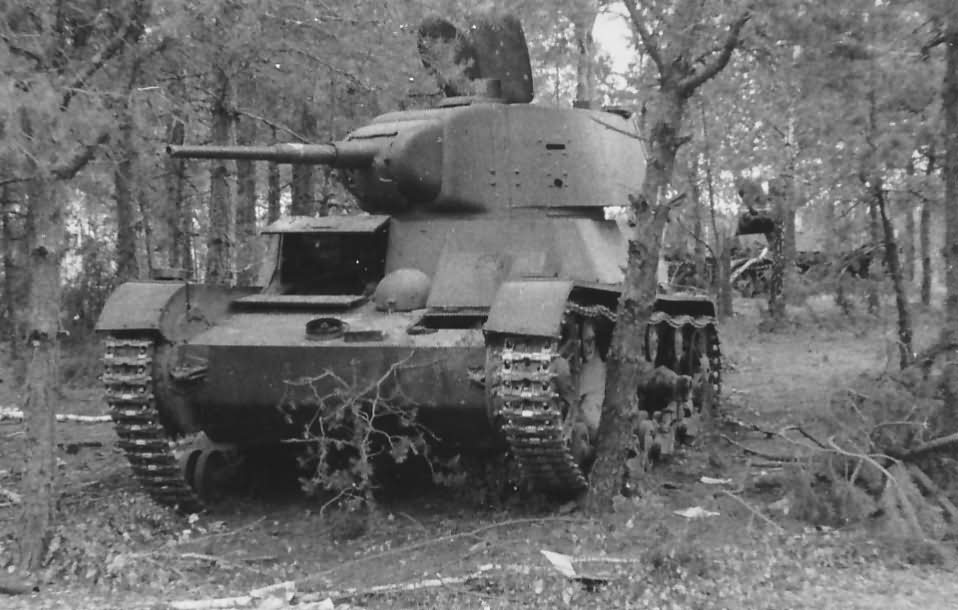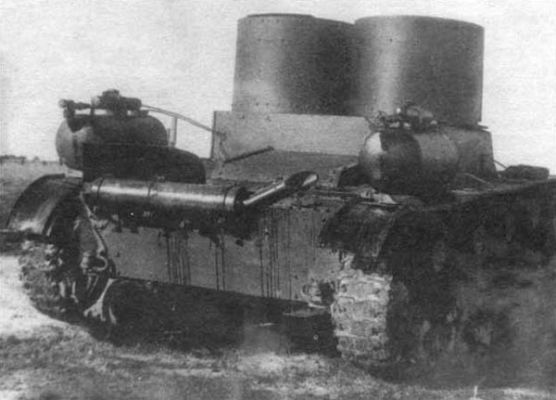Halhamiao Orahodoga Tauran Kanchazu Island Lake Khasan Khalkhin Gol Kantokuen
The Battle of Lake Khasan (July 29 – August 11, 1938), also known as the Changkufeng Incident (Russian: Хасанские бои, Chinese and Japanese: 張鼓峰事件; Chinese Pinyin: Zhānggǔfēng Shìjiàn; Japanese Romaji: Chōkohō Jiken) in China and Japan, was an attempted military incursion by Manchukuo (Japanese) into the territory claimed by the Soviet Union.
This incursion was founded in the belief of the Japanese side, that the Soviet Union misinterpreted the demarcation of the boundary based on the Treaty of Peking between Imperial Russia and the Qing Dynasty China (and subsequent supplementary agreements on demarcation) and that the demarcation markers were tampered with. Japanese forces occupied the disputed area but withdrew after heavy fighting and a diplomatic settlement.
------------
Khasanin taistelu (Finnish)
------------
For most of the first half of the twentieth century, there was considerable tension between the Russian (later Soviet), Chinese and Japanese governments, along their common borders in what became North East China. The Chinese Eastern Railway or (CER) was a railway in northeastern China (Manchuria). It connected China and the Russian Far East.
The southern branch of the CER, known in the West as the South Manchuria Railway, became the locus and partial casus belli for the Russo-Japanese War and subsequent incidents, leading to the Second Sino-Japanese War and Soviet-Japanese Border Wars. Larger incidents included the Sino-Soviet conflict of 1929 and the Mukden Incident between Japan and China in 1931. The battle of Lake Khasan was fought between two powers which had long mistrusted each other.
The confrontation was triggered when the Soviet Far East Army and Soviet State Security (NKVD) Border Guard reinforced its Khasan border with Manchuria. This was prompted in part by the defection one month before, of Soviet General GS Lyushkov, in charge of all NKVD forces in the Soviet Far East at Hunchun, in the Tumen River Area. He provided the Japanese with intelligence on the poor state of Soviet Far Eastern forces and the purge of army officers.
Camouflaged Soviet tanks
On July 6, 1938 the Japanese Kwantung Army decoded a message sent by the Russian commander in the Posyet region to Soviet headquarters in Khabarovsk. The message recommended that Russian soldiers be allowed to secure unoccupied high ground west of Lake Khasan, most notably the disputed Changkufeng Heights, because it would be advantageous for the Soviets to occupy terrain which overlooked the Korean port-city of Rajin, as well as strategic railways linking Korea to Manchuria. In the next two weeks, small groups of Soviet border troops moved into the area and began fortifying the mountain with emplacements, observation trenches, entanglements and communication facilities.
At first, the Japanese Korean Army, which had been assigned to defend the area, disregarded the Soviet advance. However, the Kwantung Army, whose administrative jurisdiction overlapped Changkufeng, pushed the Korean Army to take more action, because it was suspicious of Soviet intentions. Following this, the Korean Army took the matter to Tokyo, recommending that a formal protest be sent to the Soviet Union.
The conflict started on July 15, when the Japanese attaché in Moscow demanded the removal of Soviet border troops from the Bezymyannaya (сопка Безымянная, Chinese name: Shachaofeng) and Zaozyornaya (сопка Заозёрная, Chinese name: Changkufeng) Hills to the west of Lake Khasan in the south of Primorye not far from Vladivostok, claiming this territory by the Soviet – Korea border; the demand was rejected.
| Battle of Lake Khasan | |||||||||
|---|---|---|---|---|---|---|---|---|---|
| Soviet - Japan conflights | |||||||||
 Lieutenant IN Moshlyak and two Soviet soldiers on Zaozyornaya Hill after the battle [ | |||||||||
| |||||||||
| Belligerents | |||||||||
| Commanders and leaders | |||||||||
| Vasily Blyukher Nikolai Berzarin Grigori Shtern | Suetaka Kamezo Kotoku Sato | ||||||||
| Strength | |||||||||
| 22,950 troops 354 tanks 13 self-propelled guns 237 artillery pieces 250 aircraft (including 180 bombers) | 7,000–7,300 troops 37 artillery pieces | ||||||||
| Casualties and losses | |||||||||
| 792 killed and missing 3,279 wounded and sick 96 tanks destroyed or crippled (Japanese sources) [10] 46+ tanks destroyed (Soviet sources) | 526 killed [ 913 wounded | ||||||||
Battle
The Japanese 19th Division along with some Manchukuo units took on the Soviet 39th Rifle Corps under Grigori Shtern (eventually consisting of the 32nd, 39th and 40th Rifle Divisions, the 2nd Mechanised Brigade and two tank battalions). One of the Japanese Army Commanders at the battle was Colonel Kotoku Sato, the commander of the 75th Infantry Regiment. Lieutenant General Suetaka Kamezo gave Sato an order: "You are to mete out a firm and thorough counterattack without fail, once you gather that the enemy is advancing even in the slightest". The hidden meaning of this was that Sato had been ordered to expel the Soviets from Changkufeng.
On July 31, Sato's regiment launched a night sortie on the fortified hill. In the Changkufeng sector, 1,114 Japanese engaged a Soviet garrison of 300, eliminating them and knocking out 10 tanks, with casualties of 34 killed and 99 wounded. In the Shachofeng sector, 379 Japanese surprised and routed another 300 Soviet troops, while knocking out 7 tanks, for 11 killed and 34 wounded. Thousands more Japanese soldiers from the 19th division arrived, dug in, and requested reinforcements. High Command rejected the request, as they knew General Suetaka would use these forces to assault vulnerable Soviet positions, escalating the incident.
Japanese troops defended the disputed area. In 1933, the Japanese had designed and built a "Rinji Soko Ressha" (Special Armoured Train). The train was deployed at "2nd Armoured Train Unit" in Manchuria and participated in the Second Sino-Japanese War and the Changkufeng conflict against the Soviets, transporting thousands of Japanese troops to and from the battlefield, displaying to the west the capability of an Asian nation to implement western ideas and doctrine concerning rapid infantry deployment and transport.
On July 31, People's Commissar for Defence Kliment Voroshilov ordered combat readiness for 1st Coastal Army and the Pacific Fleet. The Soviets gathered 354 tanks and assault guns at Lake Khasan, including 257 T-26 tanks (with 10 KhT-26 flame-throwing tanks), 3 ST-26 bridge-laying tanks, 81 BT-7 light tanks and 13 SU-5-2 self-propelled guns.

BT-7 light tank. mod 1937

T-26, mod 1937

SU-5-2, 122mm + T-26 bottoms

T-26 mod.1931 TKhP-3 Tank, chemical equipment


ST-26 Tank, mod 1933.
The chief of the Far East Front, Vasily Blücher, arrived at the front line on August 2, 1938. Under his command, additional forces were moved up and from August 2–9, the Japanese forces at Changkufeng were attacked.
Such was the disparity of forces that one Japanese artillery commander observed that the Soviets fired more shells in one day than the Japanese did in the two-week affair. Despite this, the Japanese defenders organized an anti-tank defense, with disastrous results for the poorly coordinated Soviets, whose attacks were defeated with many casualties.
 Thousands of Soviet troops were killed or wounded and at least 46 tanks were knocked out, with another 39 damaged to varying degrees.
Thousands of Soviet troops were killed or wounded and at least 46 tanks were knocked out, with another 39 damaged to varying degrees. Despite repelling the Soviet thrusts, it was clear that the local Japanese units would not be able to keep Changkufeng without widening the conflict. On August 10, Japanese <<< ambassador Mamoru Shigemitsu asked for peace.
Satisfied that the incident had been brought to an "honorable" conclusion, on August 11, 1938, at 13 hours 30 minutes local time the Japanese stopped fighting and Soviet forces reoccupied the heights.
---------
More than 6,500 Soviet officers and soldiers were awarded the orders, decorations, and medals of the Soviet Union; 26 of them were awarded the title Hero of the Soviet Union, and 95 were awarded the Order of Lenin.
Soviet losses totaled 792 killed or missing and 3,279 wounded, according to their records and the Japanese claimed to have destroyed or immobilized 96 enemy tanks and 30 guns. Soviet armored losses were significant, with dozens of tanks being knocked out or destroyed and hundreds of "tank troops" becoming casualties.
 Japanese casualties, as revealed by secret Army General Staff statistics, were 1,439 casualties (526 killed or missing, 913 wounded); the Soviets claimed Japanese losses of 3,100, with 600 killed and 2,500 wounded.
Japanese casualties, as revealed by secret Army General Staff statistics, were 1,439 casualties (526 killed or missing, 913 wounded); the Soviets claimed Japanese losses of 3,100, with 600 killed and 2,500 wounded. The Soviet losses were blamed on the incompetence of Vasily Blücher. On October 22, he was arrested by the NKVD and is thought to have been tortured to death. >>>
The Japanese military, while seriously analyzing the results of the battle, engaged with the Soviets once more, with disastrous results, in the more extensive Battle of Khalkhin Gol (Nomonhan) in the Soviet-Japanese Border War of 1939. This second engagement resulted in the defeat of the Japanese Sixth Army. After World War II , at the International Military Tribunal for the Far East in 1946, thirteen high-ranking Japanese officials were charged with crimes against peace for their roles in initiating hostilities at Lake Khasan.
Ivan Pozharsky, posthumously awarded Hero of the Soviet Union for his participation in the battle











Ei kommentteja:
Lähetä kommentti
Any explosive ammunition or empty cores, you can put in this.